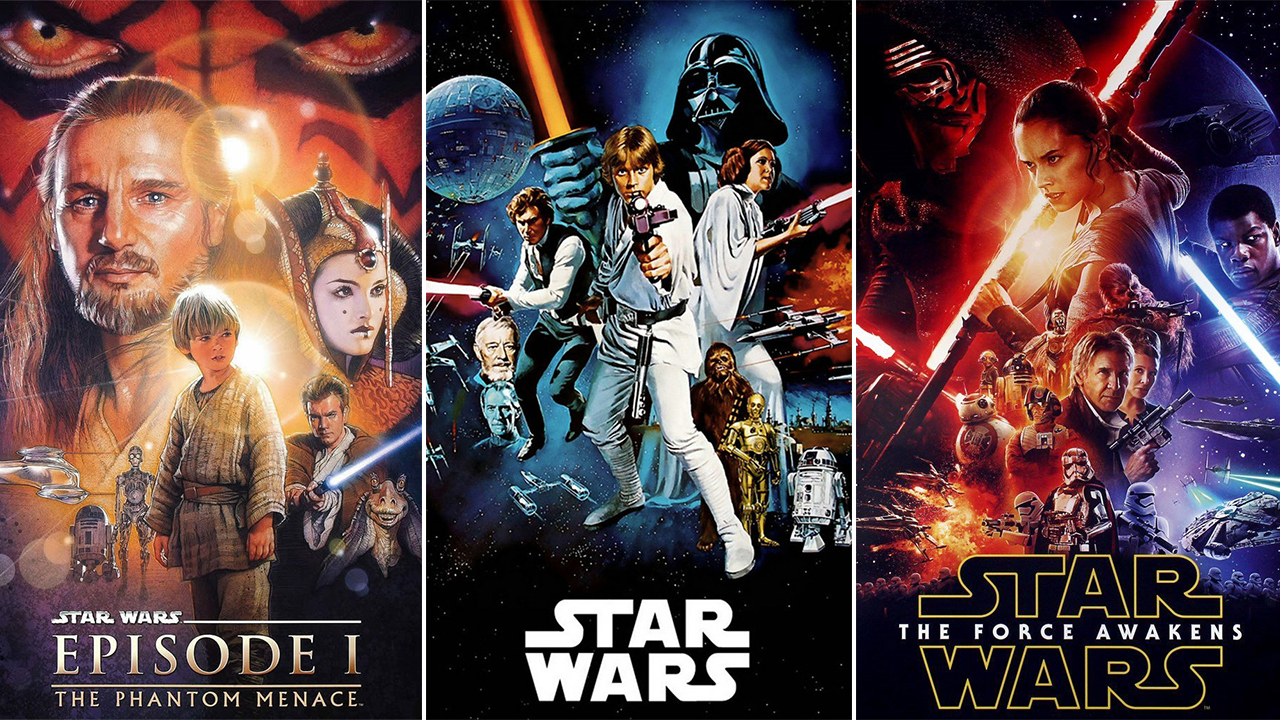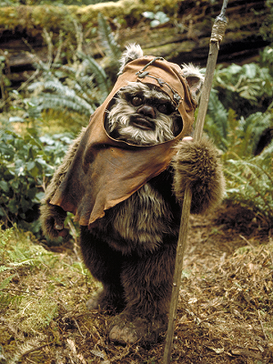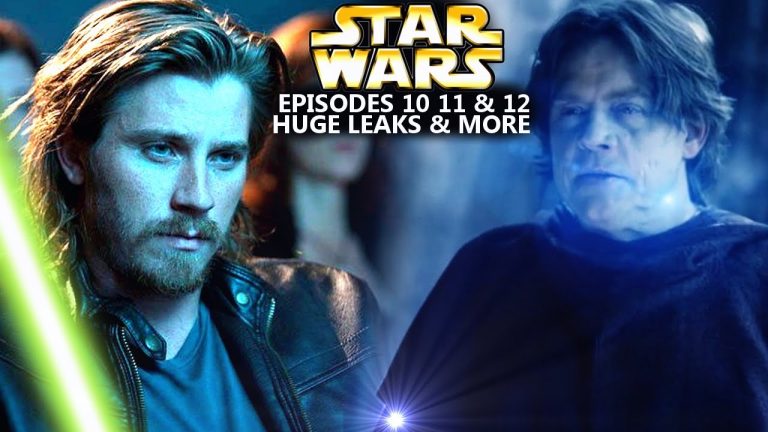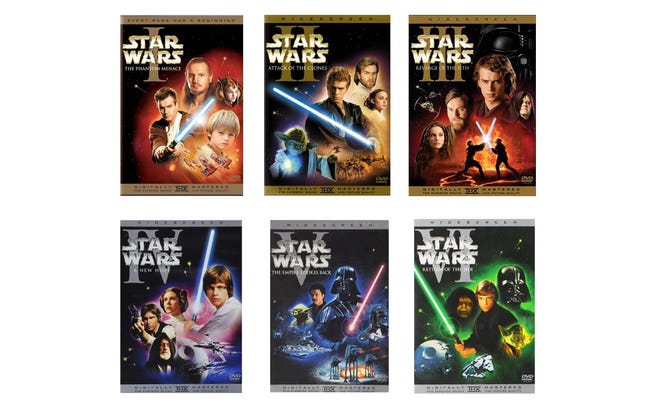What Is The Order Of Star Wars Movies?
If you’re a fan of the epic Star Wars saga, then you’ve probably found yourself asking, “What is the order of Star Wars movies?” Well, fear not, my fellow Jedi enthusiasts, for I am here to guide you through the chronological sequence of these beloved films. Whether you’re a seasoned fan or a newcomer to the galaxy far, far away, this article will provide you with the ultimate roadmap to enjoy the Star Wars movies in the correct order.
Now, I know what you’re thinking: “Where do I even begin? There are so many movies, spin-offs, and TV series!” Don’t worry, my friend, I’ve got you covered. In this article, we’ll explore the chronological order of the Star Wars movies, starting from the prequel trilogy all the way to the latest sequel trilogy. So grab your lightsaber, hop in your starship, and let’s embark on this thrilling cinematic journey together. May the Force be with you as we dive into the galaxy-spanning saga of Star Wars.

Understanding the Order of Star Wars Movies
Star Wars is a beloved franchise that has captured the hearts of millions of fans around the world. With its epic space battles, memorable characters, and compelling storytelling, it’s no wonder that people are often curious about the order in which the movies should be watched. In this article, we will delve into the chronological order of the Star Wars movies and provide you with a comprehensive guide on how to experience this iconic series.
The Original Trilogy: A New Hope, The Empire Strikes Back, and Return of the Jedi
The original Star Wars trilogy consists of three films: “A New Hope,” “The Empire Strikes Back,” and “Return of the Jedi.” These movies were released between 1977 and 1983 and introduced us to the captivating world of Jedi knights, Sith lords, and the battle between the Rebel Alliance and the evil Galactic Empire.
In “A New Hope,” we are introduced to Luke Skywalker, Princess Leia, Han Solo, and the wise Jedi Master Obi-Wan Kenobi. The film follows their journey as they try to defeat the Empire’s ultimate weapon, the Death Star. “The Empire Strikes Back” continues the story, with Luke Skywalker training to become a Jedi under the guidance of Yoda and facing the shocking revelation of his true parentage. Finally, in “Return of the Jedi,” the Rebel Alliance launches a daring mission to destroy the second Death Star and bring an end to the Empire’s reign of terror.
Order List:
1. A New Hope
2. The Empire Strikes Back
3. Return of the Jedi
These films are the foundation of the Star Wars saga and are essential viewing for any fan. They showcase the classic struggle of good versus evil and set the stage for the future installments in the franchise.
The Prequel Trilogy: The Phantom Menace, Attack of the Clones, and Revenge of the Sith
The prequel trilogy takes place before the events of the original trilogy and provides insight into the rise of the Galactic Empire and the fall of Anakin Skywalker, who would later become the iconic Darth Vader. While these films were met with mixed reviews upon their initial release, they offer a deeper understanding of the Star Wars universe and the events that led to the original trilogy.
“The Phantom Menace” introduces us to a young Anakin Skywalker and his mentor, Obi-Wan Kenobi. It also delves into the political intrigue surrounding the Republic and the emergence of the Sith. “Attack of the Clones” explores Anakin’s journey as a Jedi Knight and his forbidden romance with Padmé Amidala. The final film in the prequel trilogy, “Revenge of the Sith,” showcases Anakin’s fall to the dark side and his transformation into Darth Vader, as well as the Jedi’s battle against the Sith.
Order List:
1. The Phantom Menace
2. Attack of the Clones
3. Revenge of the Sith
While the prequel trilogy may have its detractors, it offers valuable context and backstory to the events of the original trilogy. It provides a deeper understanding of the characters and the galaxy they inhabit.
The Sequel Trilogy: The Force Awakens, The Last Jedi, and The Rise of Skywalker
The sequel trilogy takes place several decades after the events of the original trilogy and introduces a new generation of characters. These films continue the story of the Rebel Alliance’s fight against the remnants of the Empire, now known as the First Order, and the search for the last Jedi.
“The Force Awakens” introduces us to Rey, Finn, and Poe Dameron, as well as the mysterious Kylo Ren. It sets the stage for a new conflict between the light and dark sides of the Force. “The Last Jedi” delves deeper into the characters’ journeys, with Rey seeking guidance from the legendary Jedi Master Luke Skywalker and the Resistance facing the relentless onslaught of the First Order. Finally, “The Rise of Skywalker” brings the saga to a close, as Rey confronts her true lineage and the ultimate battle between good and evil unfolds.
Order List:
1. The Force Awakens
2. The Last Jedi
3. The Rise of Skywalker
The sequel trilogy offers a fresh perspective on the Star Wars universe and introduces compelling new characters to the saga. While it may not have the same nostalgic appeal as the original trilogy, it continues the story in an exciting and captivating way.
Conclusion
In conclusion, the order of the Star Wars movies is as follows: the original trilogy (A New Hope, The Empire Strikes Back, and Return of the Jedi), followed by the prequel trilogy (The Phantom Menace, Attack of the Clones, and Revenge of the Sith), and finally, the sequel trilogy (The Force Awakens, The Last Jedi, and The Rise of Skywalker). Watching the movies in this order allows you to experience the story in a chronological and cohesive manner. Whether you’re a longtime fan or a newcomer to the franchise, immersing yourself in the world of Star Wars is a truly unforgettable experience. May the Force be with you!
Key Takeaways: What is the Order of Star Wars Movies?
- The correct order to watch the Star Wars movies is: Episode IV – A New Hope, Episode V – The Empire Strikes Back, Episode VI – Return of the Jedi, Episode I – The Phantom Menace, Episode II – Attack of the Clones, Episode III – Revenge of the Sith, Episode VII – The Force Awakens, Episode VIII – The Last Jedi, and Episode IX – The Rise of Skywalker.
- Watching the movies in chronological order can provide a better understanding of the overall story and character development.
- However, some fans prefer to watch the movies in release order to experience the series as it was originally intended.
- In addition to the main saga, there are standalone Star Wars films like Rogue One and Solo that can be watched at any point.
- Ultimately, the order in which you watch the Star Wars movies is a personal preference, so feel free to experiment and find the order that you enjoy the most!
Frequently Asked Questions
Star Wars is one of the most beloved and iconic film franchises of all time. With its vast universe and intricate storyline, it’s natural to wonder about the order in which the movies should be watched. In this article, we’ll provide you with the chronological order of the Star Wars movies, so you can fully immerse yourself in the epic saga.
1. What is the chronological order of the Star Wars movies?
The chronological order of the Star Wars movies is as follows:
The prequel trilogy:
– Episode I: The Phantom Menace (1999)
– Episode II: Attack of the Clones (2002)
– Episode III: Revenge of the Sith (2005)
The original trilogy:
– Episode IV: A New Hope (1977)
– Episode V: The Empire Strikes Back (1980)
– Episode VI: Return of the Jedi (1983)
The sequel trilogy:
– Episode VII: The Force Awakens (2015)
– Episode VIII: The Last Jedi (2017)
– Episode IX: The Rise of Skywalker (2019)
Additionally, there are standalone films that expand the Star Wars universe, such as Rogue One: A Star Wars Story (2016) and Solo: A Star Wars Story (2018), which can be watched at any point after the original trilogy.
2. Should I watch the Star Wars movies in chronological order?
The Star Wars movies can be enjoyed in both chronological order and release order. Watching them in chronological order allows you to experience the story as it unfolds from the prequel trilogy to the sequel trilogy. However, watching them in release order, starting with the original trilogy, allows you to experience the saga as it was originally intended and can provide a more nostalgic viewing experience. Ultimately, the choice is up to you and how you prefer to explore the Star Wars universe.
It’s worth noting that there are references and callbacks to previous movies throughout the series, so watching them in either order will enhance your understanding and enjoyment of the overall story.
3. Are there any recommended viewing orders for the Star Wars movies?
Aside from chronological and release order, there are a few popular viewing orders that fans recommend:
– Machete Order: This order suggests watching the original trilogy (Episodes IV, V, VI), followed by the prequel trilogy (Episodes I, II, III), and then concluding with the sequel trilogy (Episodes VII, VIII, IX). This order aims to enhance the narrative flow and preserve the surprise twist in Episode V.
– Flashback Order: This order suggests starting with Episode IV, then watching Episode V as a flashback to explore the origins of certain characters, followed by Episodes II and III as further flashbacks, and finally concluding with Episodes VI, I, VII, VIII, and IX.
These alternate viewing orders offer unique perspectives and can add a different layer of enjoyment to the Star Wars saga.
4. Can I skip the prequel trilogy and still understand the story?
While it is possible to skip the prequel trilogy (Episodes I, II, III) and still understand the overall story of Star Wars, watching them provides valuable context and insight into the origins of key characters, such as Anakin Skywalker and Obi-Wan Kenobi. The prequel trilogy also delves into the rise of the Galactic Empire and the events that led to the original trilogy. Skipping the prequels may result in missing out on important plot points and character development.
However, if you prefer to focus solely on the original and sequel trilogies, you can still enjoy the Star Wars saga without watching the prequel trilogy.
5. Are the standalone films necessary to watch?
The standalone films, such as Rogue One: A Star Wars Story and Solo: A Star Wars Story, are not necessary to watch in order to understand the main Star Wars storyline. However, they provide additional depth and expand upon certain aspects of the Star Wars universe. Rogue One, for example, showcases the events leading up to the original trilogy, while Solo explores the backstory of the beloved character Han Solo.
If you’re a die-hard Star Wars fan, watching the standalone films can enhance your overall experience and provide a more complete understanding of the Star Wars universe. However, if you’re primarily interested in the main saga, you can enjoy the core storyline without watching the standalone films.
Final Summary: The Epic Saga in the Correct Order
So there you have it, my friends! The definitive answer to the burning question, “What is the order of Star Wars movies?” We’ve embarked on a journey through a galaxy far, far away, and now we can confidently navigate the vast universe of Star Wars films. From the original trilogy that captured our hearts to the prequels that delved into the origins of beloved characters, and the sequels that continued the saga, we’ve seen the story unfold in a grand and epic way.
Whether you’re a die-hard fan or a newcomer to the Star Wars universe, understanding the chronological order of the movies is crucial for a complete and immersive experience. Starting with Episode I: The Phantom Menace, we witness the rise of Anakin Skywalker and the fall of the Republic. Then, we travel back in time to the original trilogy, experiencing the hero’s journey of Luke Skywalker and his battle against the Sith. Finally, the sequels bring us new adventures with Rey, Finn, and Poe as they face the remnants of the Empire.
So, grab your lightsaber, gather your friends, and embark on a Star Wars marathon like no other. May the Force be with you as you immerse yourself in this timeless saga. Remember, the order may be different, but the magic of Star Wars remains the same. May your journey through the stars be filled with excitement, nostalgia, and the thrill of discovering new worlds. Get ready to embrace the Force and may your lightsaber always shine bright!






